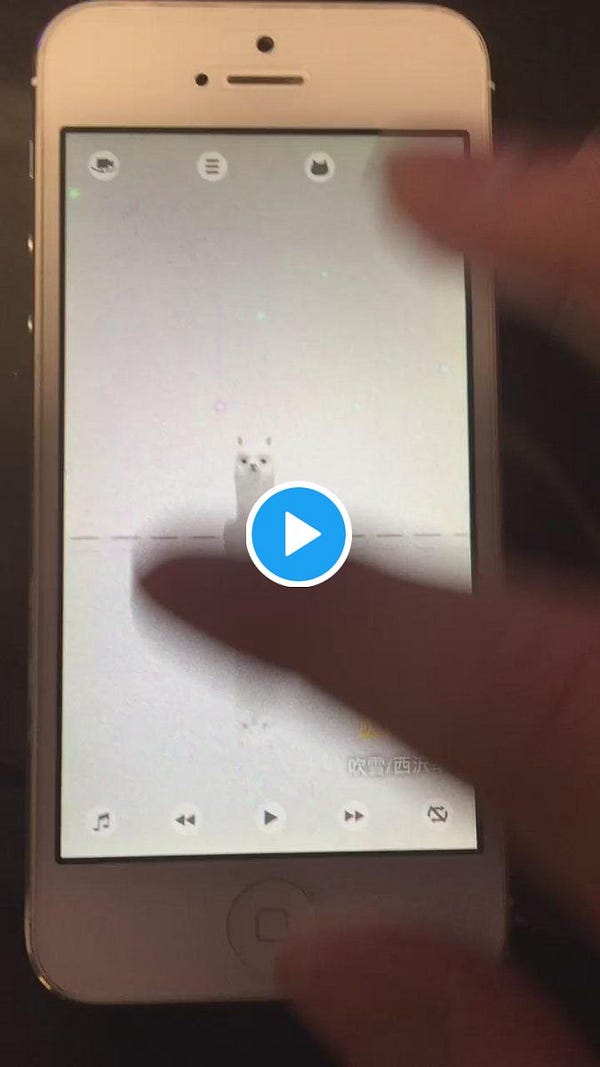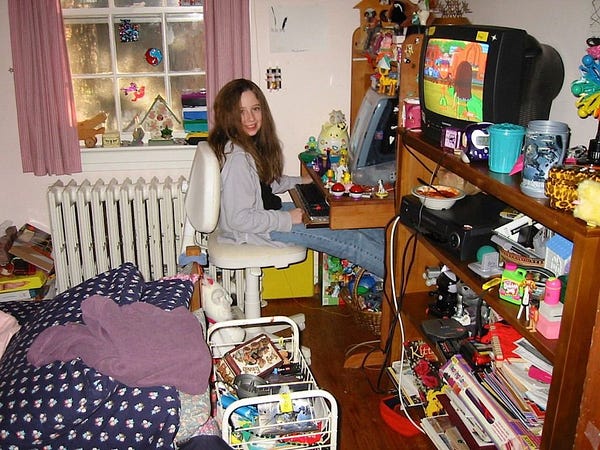bug fixes and performance improvements
we're constantly updating the app so you have a good experience with our app. in this latest app you'll find new features like: performance enhancements and bug fixes.
A lot of technology runs on this thing called software. Software is a collection of blorps and bytes that helps the person poking the software (user) accomplish goals. It used to be that you would buy software and that was it. That was the final version of the software and maybe a year later, the company would release Software 2. Now there’s all sorts of software (apps) and they get updated every day.
Personally speaking, I love installing software updates. It rules. New features? Great. A number going from 0 to 100? Perfect. When the bar fills up so fast and repeatedly that it looks like it’s flashing as file paths flicker by underneath it? Sign me up!
But updating software is not a perfect process. One of the worst trends of the last decade has to do with software updates. You’re familiar with this problem even if you haven’t noticed it. I am talking about “Bug fixes and performance improvements.” I hate it!
I mean, I love bug fixes and performance improvements, but I absolutely loathe the phrase, “Bug fixes and performance improvements” and its ilk. Because it is now the only thing I learn about the software updates I’m installing.

Updates used to be accompanied by patch notes, explaining what’s been changed and fixed. One of my favorite occasional activities is reading patch notes for the video game The Sims, which has incredible patch notes. Fascinating strings of characters like, “Sims will no longer flicker on and off the landing pad, when in the Rocket Ship using the WooHoo or Try for Baby interactions.”
Here are a few more:
Sims living in dorms should no longer receive high bills to live there.
Child sims will no longer get a flirty buff after eating Flutterberry.
Sims can once again resume writing books when their familiars are active.
Fun!
App patch notes used to be a detailed list like these, but now the list is a single bullet point and that bullet point is “Bug fixes and performance improvements.” I do not know which software patch was patient zero for this trend but I’d like to throw whoever came up with it off a cliff.
Patch notes like the ones for The Sims are fun, but they also serve as easy ways of disclosing fixed vulnerabilities in a platform, listing exploits that users can no longer perform. The central tension though is that writing detailed patch notes requires software companies to admit that they are not perfect and, for large tech companies, that their screwups and oversights potentially imperiled users.
Here are the latest updates for Google and Facebook’s flagship apps:

And so sometime in the last decade, every app maker just started using “Bug fixes and performance improvements” to say that they made their app better without actually saying how. That sucks! It’s not like it’s a lot of work to assemble detailed patch notes. It’s just a list of things some people accomplished. It’s already written down somewhere.
“Ah, but!” you say. “Disclosing the fixed exploits will let people who haven’t updated keep using them.” Not really! Online multiplayer games have mostly figured this out by preventing people on old versions from playing the game. All an online platform needs to do is check the user’s software version and decide to let them through or not. Seems pretty easy to me!
There’s no reason to not include detailed patch notes other than willful obfuscation. It lets tech companies avoid scrutiny and accountability. It blows. Every time you read “Bug fixes and performance improvements,” you are getting worked.
screenshot of despair

tell your friends
BNet, this newsletter, started as a thing to do during a furlough and it’s now a thing I do during unemployment. What I have enjoyed about doing this is that I get to do the sort of writing about the internet that I am interested in, and which largely doesn’t exist anywhere else, and quite frankly couldn’t. It feels like every outlet has now boiled down “internet culture” to two things. The first is writing about easily identifiable popular stuff (influencers, trending topics, memes) in shallow, SEO-friendly ways. The second is the “disinformation” beat, which largely entails reporters heading to their fainting couches every time they find something bad online.

These two buckets of internet coverage are pretty boring, and at this point, predictable to me. Like, I really don’t care about coverage of how brave teens discovered the Wikipedia entry for Depression in 2017 and are now making posts about it. Likewise, I don’t really care about stuff like fake news and QAnon, which is just the latest in a long history of right-wing fanaticism. (I’m clearly painting with a very broad brush here. There’s nuance, just not enough to make me care about the 10,000th column with a thesis like “Gen Z Is The First Ever to Clap Back At Meanies” or “Russian Bots Have Hacked Our Attention, and They’re Using Memes As Digital Bullets in the Information Wars.”) The thing BNet allows me to do is approach stuff from unconventional angles, and without having to discuss every online trend as some novel new thing that’s never happened before.
Earlier this week, I was looking at videos on TikTok using the “Mi Pan” song, which is a sped-up cover of a Russian cereal commerical jingle. Every article I’ve read explaining it has mostly explained where the sound comes from and that’s fine, but that’s not really what I’m interested in.
The most popular “Mi Pan” video is from an Alt TikTok account that now goes by @awa_de_horchata_uwu (but was previously @yos_uwu), and it features red-tinted video of a llama dancing to the sound clip. The llama and the dance have since become famous in their own right, and yet there is no clear info about where they come from. “Who,” I wondered, “came up with this dance?”
So I started looking. TikTok is a nightmare to search, so I went to YouTube, where I found a video called “Mi pan susu original #MIPAN.” That video features the same llama doing the same dance moves, but without the red tint. So: seems pretty likely that this is where the llama came from. That video is watermarked with the username “marinosaurio” but unfortunately, that YouTube channel doesn’t exist. Clearly, this is a mirror of the original, and so now I know that marinosaurio created the llama video, and I’m trying to find the true original.
On a video called “Mi Pan Su Su Sum //Meme Versión Creepypasta//Gacha Club//Killer sama” I find the link to the original: https://youtu.be/7nt_bc_502Y.(Further confirmation at this link.)
Alright, now we’re in business. So I google that URL and that leads me to a Spanish-language news article. I click there and the video is, as expected, dead. In fact, it turns out the entire Marinosaurio channel is dead due to numerous copyright violations. The embedded video has been taken down due to a (likely automated) complaint from DJ Bryanflow, who remixed the “Mi Pan” song.
A dead end. I google the channel URL and that leads me to Marinosaurio’s Instagram account and a Gmail address, but weirdly he did not respond to my requests for an interview. Either because I wrote it in English or because wanting to know about the origins of the llama is weird. A toss-up. In the meantime, I’ve found a cached version of his original llama video and let’s see what’s in the video description.

Huh! A pretty popular channel, and a pretty popular video! Oh and also: confirmation that Marinosaurio and TikTok user @awa_de_horchata_uwu are the same person. It appears that in the last day or so, the YouTube channel (full of aesthetic edits) has been reinstated, but the original llama video is now private.
I have gone in a full loop and have discovered where the original llama video came from, but I still do not know where the llama is. Based on the motion in Marinosaurio’s original on YouTube, it looks like a smartphone app (the similar but not identical llama footage at 4:27 in this compilation confirms as much). But nothing is showing up on the iOS App Store or Google Play, when I search “llama.” A conundrum. I go to the next tool in my arsenal, Twitter, where I search “dancing llama app” and find a tweet using those words to respond to a viral Japanese video posted in 2015.
!!!!! The llama is doing the dance! A huge breakthrough. I poke around enough and find hints at an app called aDanza and find ancient listings for it on third-party app directories.

Mystery solved. The alpaca and its dance comes from the aDanza app. The app is not available on iOS and is no longer available on Google Play but I download the APK and mess around with it anyway. But I’m not finished yet, so I decided to check out Creatures Inc., which it turns out is a software developer closely affiliated with… The Pokémon Company.
In summation:
The viral TikTok “Mi Pan” audio comes from a sped-up cover of a Russian cereal commerical jingle. And the popular dancing llama video that went viral in tandem was created by a content creator named Marinosaurio using a Japanese app called aDanza, which was created by people who develop Pokémon games.
ANYWAY, I could spend weeks trying to pitch something like what you just read to an editor who will pay me not-enough for it, or I could just write it for you all as soon as the idea hits me. I vastly prefer the latter.
Unfortunately, I also have expenses. At the end of the month, my severance-based health insurance runs out and I’ll have to start paying for some, assuming the media industry doesn’t miraculously recover from total devastation and hand me a job with benefits. I have absolutely no interest in turning BNet into a business, but if I can subsidize that cost just a little, it’d be cool.
This is a roundabout way of saying: you can pay money for BNet if you’d like to — $6.66 a month, which I set up as a joke and gets you minimal bonus features, but which I also think is pretty reasonable for two newsletters every single week.
You absolutely do not need to pay any money, but I figured an occasional reminder that you can would not be overbearing. If you like this stuff, please feel free to tell your friends or share it on social media or forward it to your boss.
Elsewhere…
tag yourself in this compaesthetics pic. i’m the Bionicle container on the shelf
Thank you for reading BNet. WAP stands for “Worship and Praise.”



